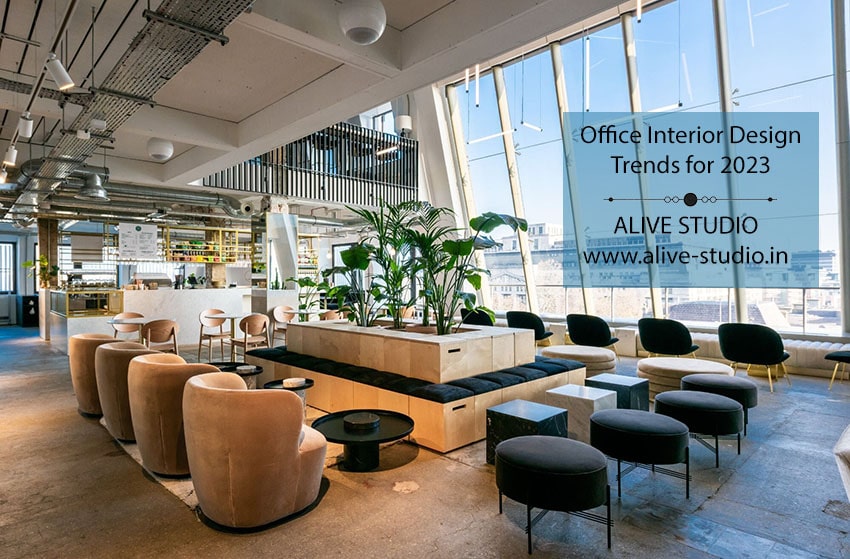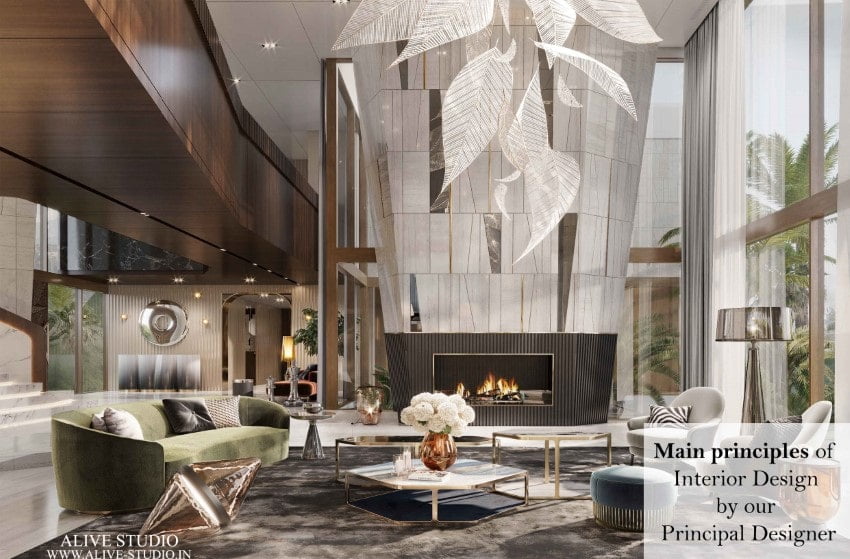
Main Principles of Interior Design You Should Know Before Renovating: Explained
According to Wikipedia, interior design “is a multifaceted profession that includes conceptual development, space planning, site inspections, programming, researching, and communicating with the stakeholders of a project, construction management, and execution of the design. “Interior design is the science and art of enhancing the environment of any space to make it more refined and aesthetically pleasing.
Interior designers work towards this goal in different ways, but the underlying principles of interior design they leverage remain mostly the same. These principles guide the making of any well-designed space, and by having a sound knowledge of these principles, you can improve the aesthetic of any space.
Main Principles that Guide Interior Design:
Design principles generate various practices designers employ to manage different interior design elements to create a particular aesthetic. Through the lenses of these principles, designers can judge where the space needs to change.
These principles are not a lot in number but remarkably influence the aesthetics of all spaces. Here is an overview:
1. Balance

In interior design, balance is the distribution of the elements in a space to create visual balance. It is the distribution of visual weight in any interior. Balance is necessary to give a place a sense of equilibrium. We can categorize balance in interior design into three parts:
a.) Symmetrical Balance.
Balance, in symmetry in a particular space, refers to the equal split of interior elements to achieve a perfect mirroring effect along the central axis. It is a common principle used chiefly in formal environments and thus also known as formal balance. For example, chairs in equal numbers on either side of a table create a symmetrical balance.
b.) Asymmetrical Balance
In contrast with symmetrical balance, Asymmetrical balance forms by setting disparate elements in a non-symmetrical way to achieve an aesthetic. With this, an informal and more casual aesthetic is achieved, and it also known as informal balance.
For example, a semi- circle of chairs around a table can cause an asymmetrical balance.
c.) Radial Balance
Radial balance is an interesting twist to the principle of balance. Just as the Sun is the center from which sunrays radiate to all directions, radial balance is achieved by having a central element to arrange all other elements around it so that they feel radiating from it.
To get this effect, you can place a sculpture or furniture as the center focal point and arrange other elements around it.
Things you can keep in mind:
- In a home environment, informal or radial balance can be the right choice because of the intimate vibe.
- Consider all the interior elements and see what you can bring in/remove to achieve the desired balance.
- Before renovating, consult an expert designer if you’re not sure you’re up for the task. Anupam Singh, the principal designer at Alive Studio, a leading residential architectural and interior design firm based in Gurgaon, shares his views on how you can choose the right interior designer for your home.
2.) Rhythm
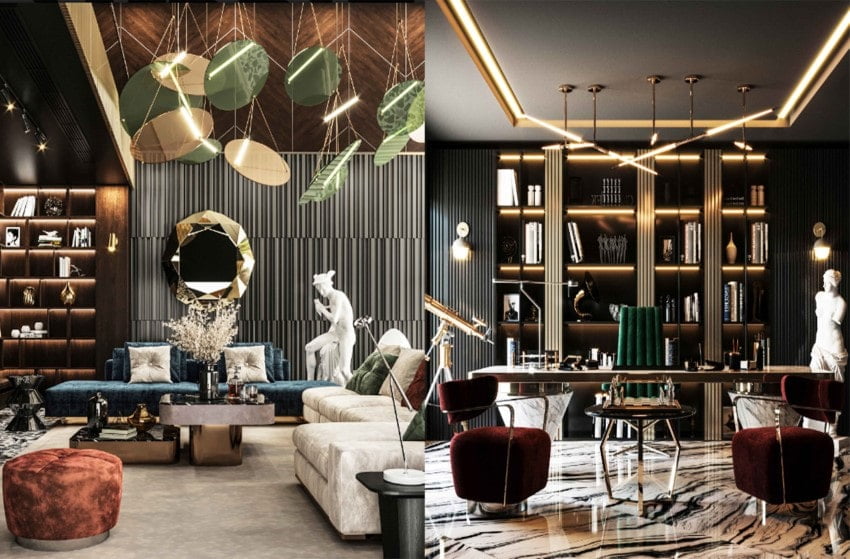
When you hear the word rhythm, you immediately think of music. In interior design, rhythm means almost the same as it does in music. It is the patterning of the elements in a way to give the eyes a pleasant sensation. As the music rises and falls, creating a sense of change, you also can arrange elements in a few ways to establish a sense of rhythm.
Here’s a few ways to get the rhythm right for your space:
a.) Use of Repetition
By repetition, you can establish a rhythm that suits your space. You can make use of specifically shaped or colored elements, and create rhythm.
b.) Use of Progression
You can also use progression to set rhythm. You can do it by placing elements in increasing or decreasing order or using color gradation to achieve the effect. You can also play with light to set rhythm through progression.
c.) Use of Transition
Transitions are also a good way to set the rhythm of your space. You can use transitions to create a smooth or hitting rhythm, and for this, you can leverage various elements such as lighting, colors, custom furniture, etc.
Things you can keep in Mind:
- The rhythm of your space plays a major part in setting the mood. Depending on the space, (eg. living room, library, dining hall, etc.), you can decide on the appropriate rhythm.
- Rhythm is dependent on various elements, and setting your desired rhythm depends on leveraging these.
3.) Emphasis
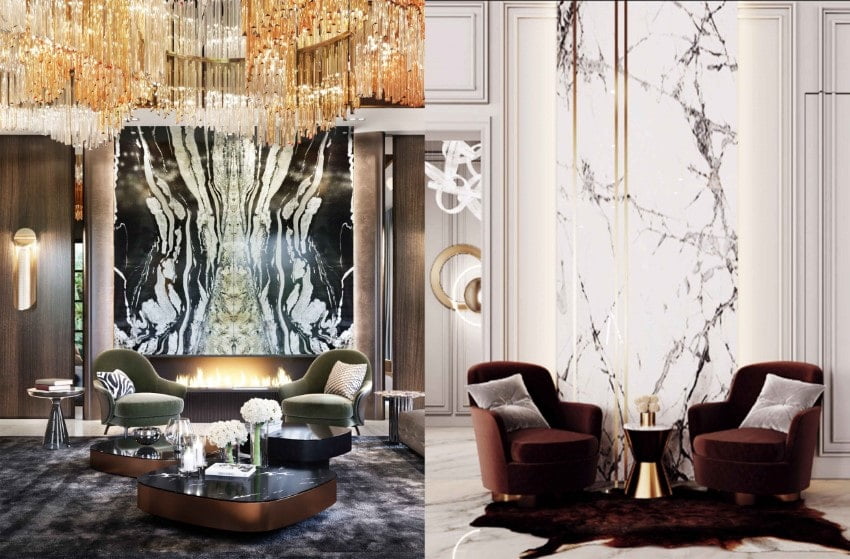
Emphasis is setting the focus point of your interior. In any space, your eyes go everywhere, but stop to admire certain areas. You can call these the focus points of your space. Focus points may be part of the interior, or you can design these.
Emphasis, in terms of interior design means to identify parts of your space you want to stand and design the space to accomplish that. It may be your work/study corner, fireplace, window with a view etc., you can strategically arrange elements in your room to put the emphasis on your desired points.
Emphasis can be achieved by:
a.) Using Interior Design Elements
You can emphasize the interior design elements, such as your fireplace or a window with a view, and improve the interior. These elements can be the focus point, and you can work around them to achieve the desired effect.
b.) Using Strategic Placement
Using strategic placement, you can create a point to emphasize. You can leverage any part of the interior and by placing elements strategically around your chosen point you can achieve the desired result.
Things you can keep in mind:
- Choose you focus points wisely, as it’ll define the entire space in a vital way.
- You can be over, and you can be lacking. Striking a sound balance between, you can get the right emphasis on your chosen points.
4.) Contrast
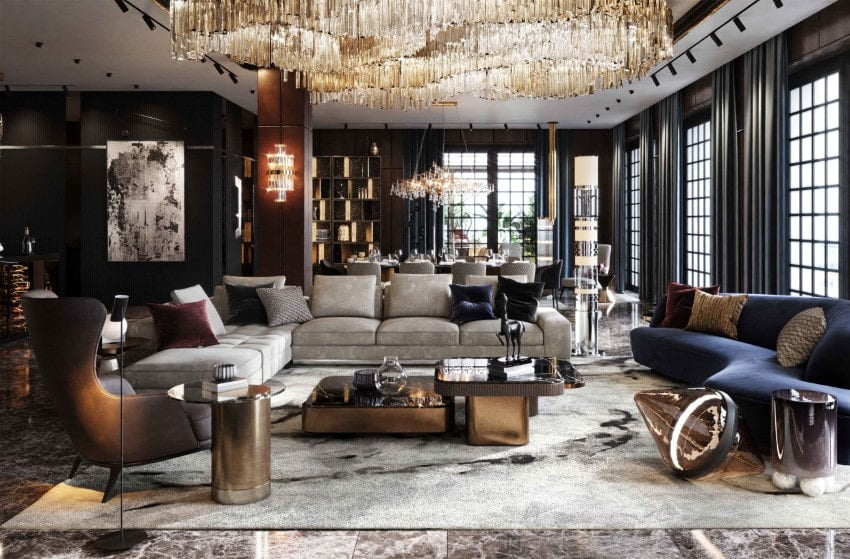
Contrast as the name suggests, is creating an aesthetic by the way of setting two design elements against each other. Setting two elements against each other does not mean they should confuse the viewers. Using contrast, designers aim to achieve variety by positioning different elements in a way, that they complement each other and the whole aesthetic.
Contrast can be achieved by the following means:
a.) Using Colors
Using different colors against each other, designers can achieve contrast and improve the total aesthetic. For eg., Pink with Teal is a nice combination, and you can also use white with different colors, especially with red and blue.
b.) Using Different Forms
You can use differing forms to achieve contrast in the space. You can use furniture, wall hangings, decorative, and almost any object with different forms that go well against each other.
c.) With Textures
Texture is the surface quality of the various elements of your interior. Play with a variety of texture can also achieve contrast in your interior.
d.) With Material
A variety in terms of material used, can also affect contrast in your interior. Cotton, wood, concrete, and other such material types can be arranged to highlight and complement each other.
Things you can keep in mind:
Place elements in such a way that they complement each other.
You can use almost anything as long as it goes well with the integrated aesthetic of the room.
5.) Proportion and Scale
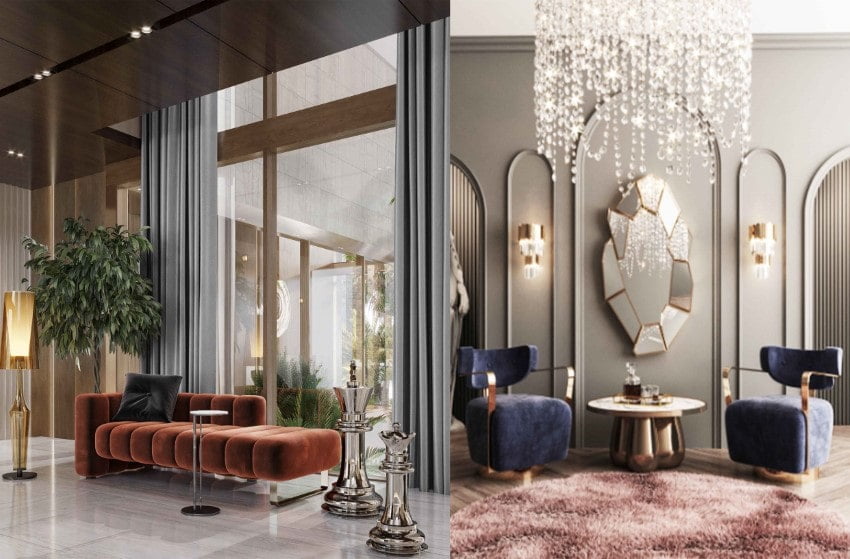
Scale, in terms of interior design refers to the size of one object in the interior in relation to another element or the space. Proportion refers to the ratio between the sizes of one part of the interior to another. Setting the proportion and scale in an interior to achieve an aesthetic has been done for a long time.
Ancient Greeks, with their Golden Section Principle, solved the proportion problem by ensuring that the smaller portion is to the larger- portion in ratio, as the larger- portion is to the whole.
Things to keep in mind:
- Arrange the interior so, that the scale does not overthrow the possibility of a united aesthetic.
- During renovations, if there’s something that’s off about the interior structural elements, you can rectify it by discussing with your interior designer.
6.) Harmony

Harmony is a musical word. Similarly, in terms of interior design, harmony refers to the united song of the various components that make up your space. By utilizing principles of interior designs in a proper way, you can achieve harmony within your space. If there are a few elements not working well with each other, you can achieve harmony by formulating a connection between these elements to achieve a sense of unity.
Harmony is your overall vision for your space. It is more of a result of all the various elements working together to communicate the overall aesthetic, and to remove any sense of disorganization, cluttering, or confusion.
Things to keep in mind:
- All interior elements should interrelate, balance, and organize to give a sense of unity.
- Remove distractions and clutter to communicate a particular aesthetic.
Conclusion
Before renovating you space, you can surely benefit from learning the various principles that affect interior design. Learning about these elements with help you get more involved in the renovation process with your design expert and communicate your vision. You can achieve the aesthetic you’ve dreamed for your home by leveraging these principles and bring harmony into your space.
FAQ’s
Q- How do you balance room decor?
A- You can balance your room decor by arranging the interior elements. This you can achieve through color, pattern, texture, etc. You can balance your room symmetrically, asymmetrically, or radially to get your desired view.
Q- How do you show unity in interior design?
A- You can show unity by interrelating, organizing, and balancing various elements in the room and creating a sense of smooth flow. If something does not go with anything, and is cluttering the space, you can either fill in elements to make it a part of the whole, or remove it.
Q- What is the golden rule in interior design?
A- Golden rule, also called golden mean, golden section, Golden ratio (and more), is a natural principle found in nature, from atomic to leading structures. Ancient Greeks observed the Golden section, same as the golden rule, which ensured that the smaller portion of the space was the same in ratio to the larger- portion as the larger- portion was to the whole.
Golden rule in interior design is based on the ratio 2:3. The biggest element of the interior should be in the ratio 2:3 to the whole, and you can interrelate other interior elements the same way.
Q- What is the rule of thirds in interior design?
A- Rule of thirds is a principle used in various disciplines. Rule of thirds proposes that a visual frame to be divided into nine equal parts by two equally spaced horizontal lines and two equally spaced vertical lines. According to the rule, placing the interior elements along these lines and their intersection will enhance the entire aesthetic and lend more energy, tension and interest to the whole view.




